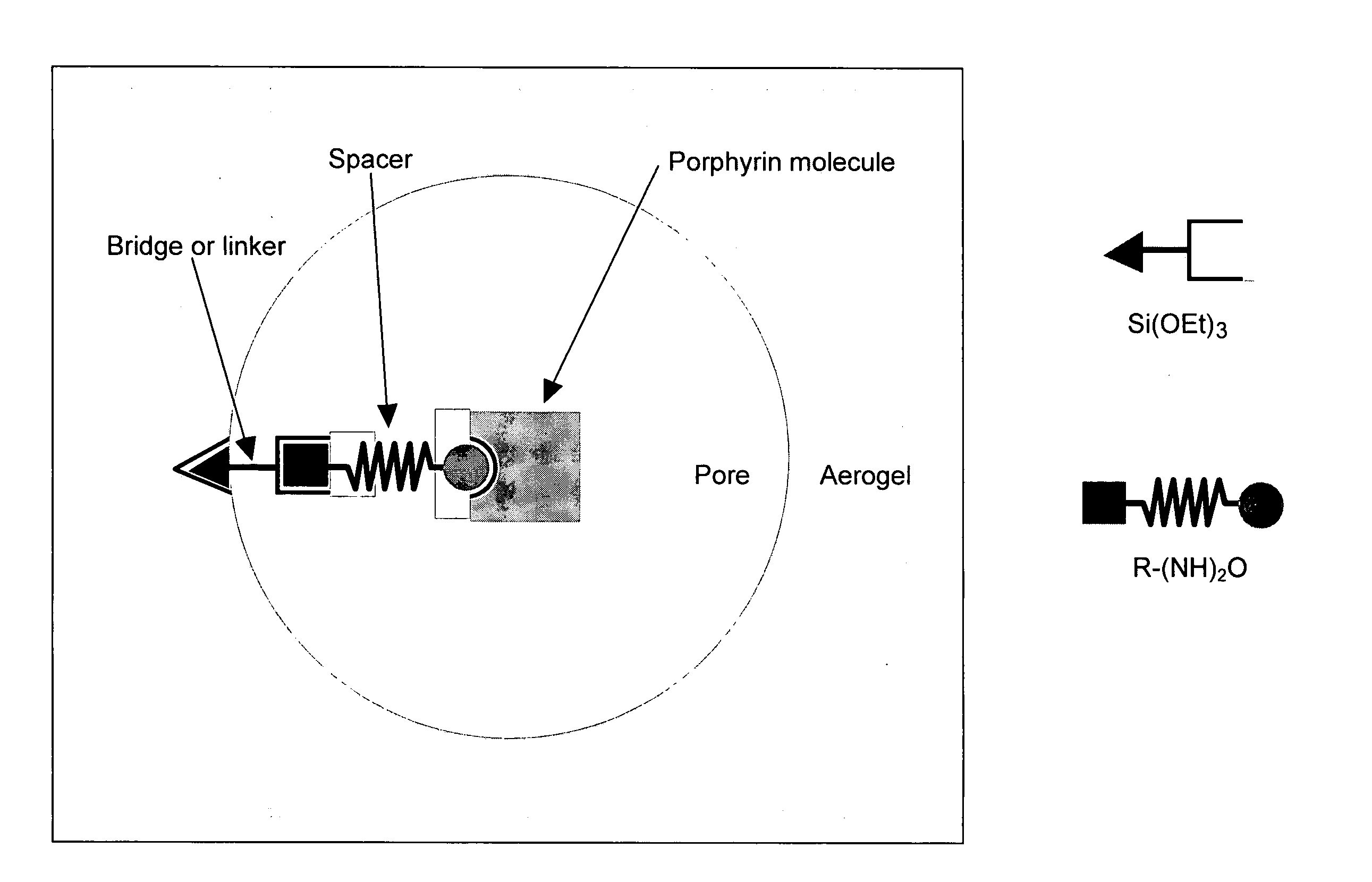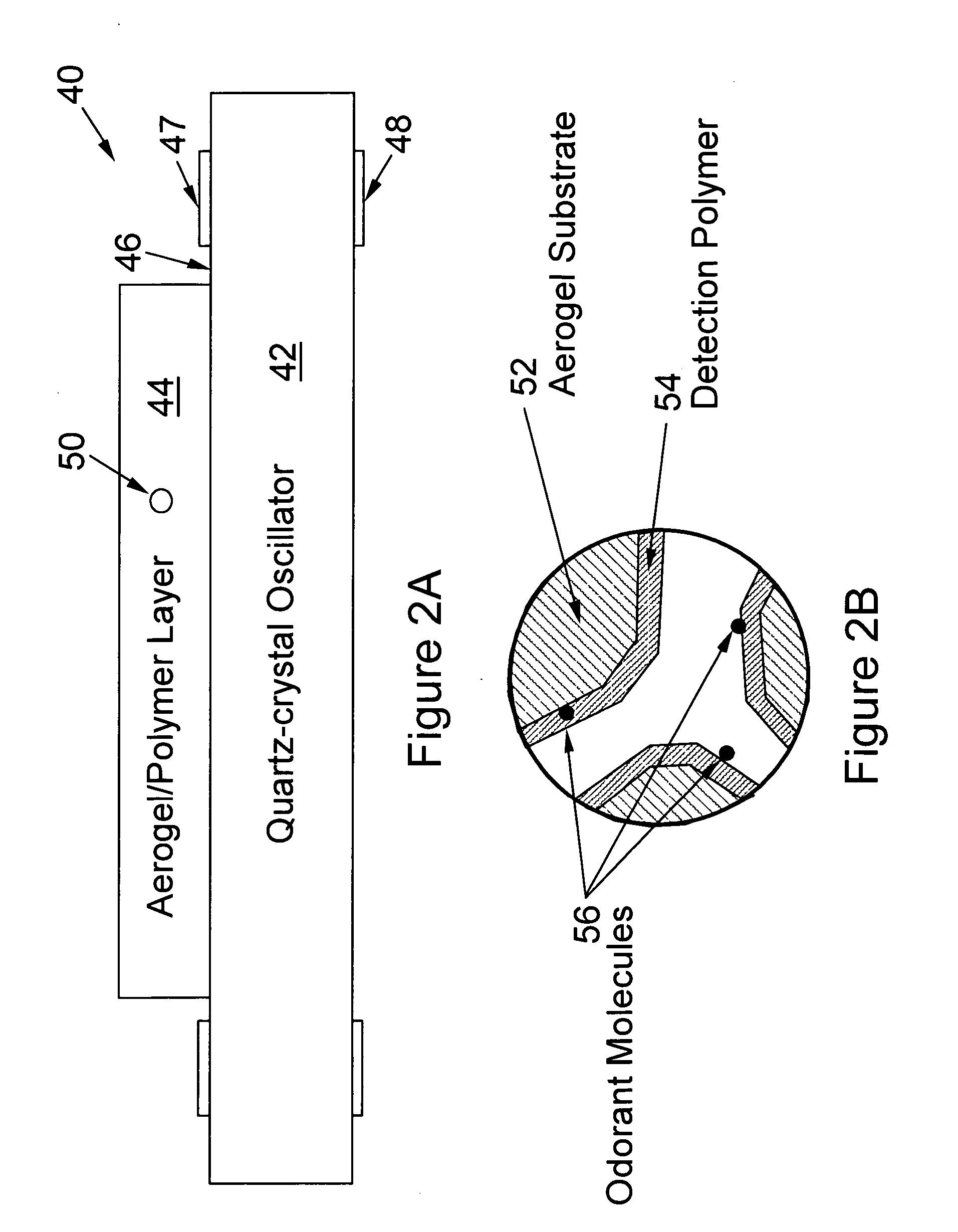Ultrasensitive olfactory system fabrication with doped aerogels
a technology of aerogels and olfactory systems, applied in the field of ultrasensitive sensors, can solve the problems of limited olfactory systems, high manufacturing cost and complexity, and only good lb techniques for deposition on another layer, etc., and achieve the effect of large surface area
- Summary
- Abstract
- Description
- Claims
- Application Information
AI Technical Summary
Benefits of technology
Problems solved by technology
Method used
Image
Examples
Embodiment Construction
[0016] The basic principles of an ultrasensitive sensor element and array are described in U.S. Pat. No. 6,598,459, which is herein incorporated by reference. However the type of sensor is not limited to the types of sensors shown therein, but more broadly applies to any other type of sensor where a high surface area may provide a higher amount of sensing material, e.g. optical sensors.
[0017] In this invention, materials such as aerogel, xerogel, nanotubes, porous carbon, zeolites, man-made structures such as those created by micromachining or nanotube-like or dendrite-like growth processes, and any other materials that can provide large surface areas relative to the physical dimensions of the sensor, are used as a substrate for the sensing system. Two appropriate molecules, A and B, are chosen to link the sensing molecule, S, to the substrate, Su. While the following description is in terms of single molecules, there are of course many similar molecules attached through many space...
PUM
| Property | Measurement | Unit |
|---|---|---|
| frequency | aaaaa | aaaaa |
| surface area | aaaaa | aaaaa |
| processing | aaaaa | aaaaa |
Abstract
Description
Claims
Application Information
 Login to View More
Login to View More - R&D
- Intellectual Property
- Life Sciences
- Materials
- Tech Scout
- Unparalleled Data Quality
- Higher Quality Content
- 60% Fewer Hallucinations
Browse by: Latest US Patents, China's latest patents, Technical Efficacy Thesaurus, Application Domain, Technology Topic, Popular Technical Reports.
© 2025 PatSnap. All rights reserved.Legal|Privacy policy|Modern Slavery Act Transparency Statement|Sitemap|About US| Contact US: help@patsnap.com



